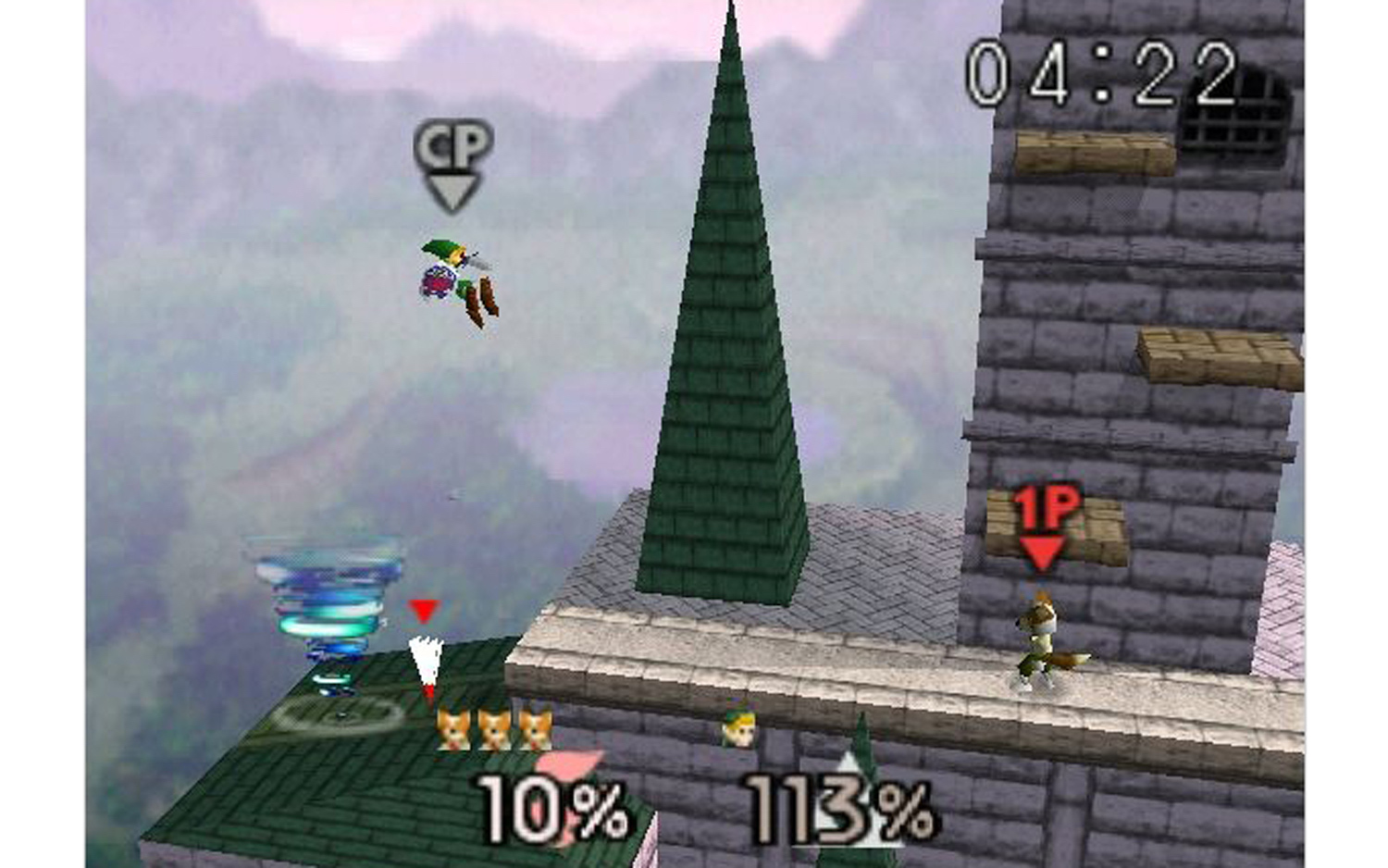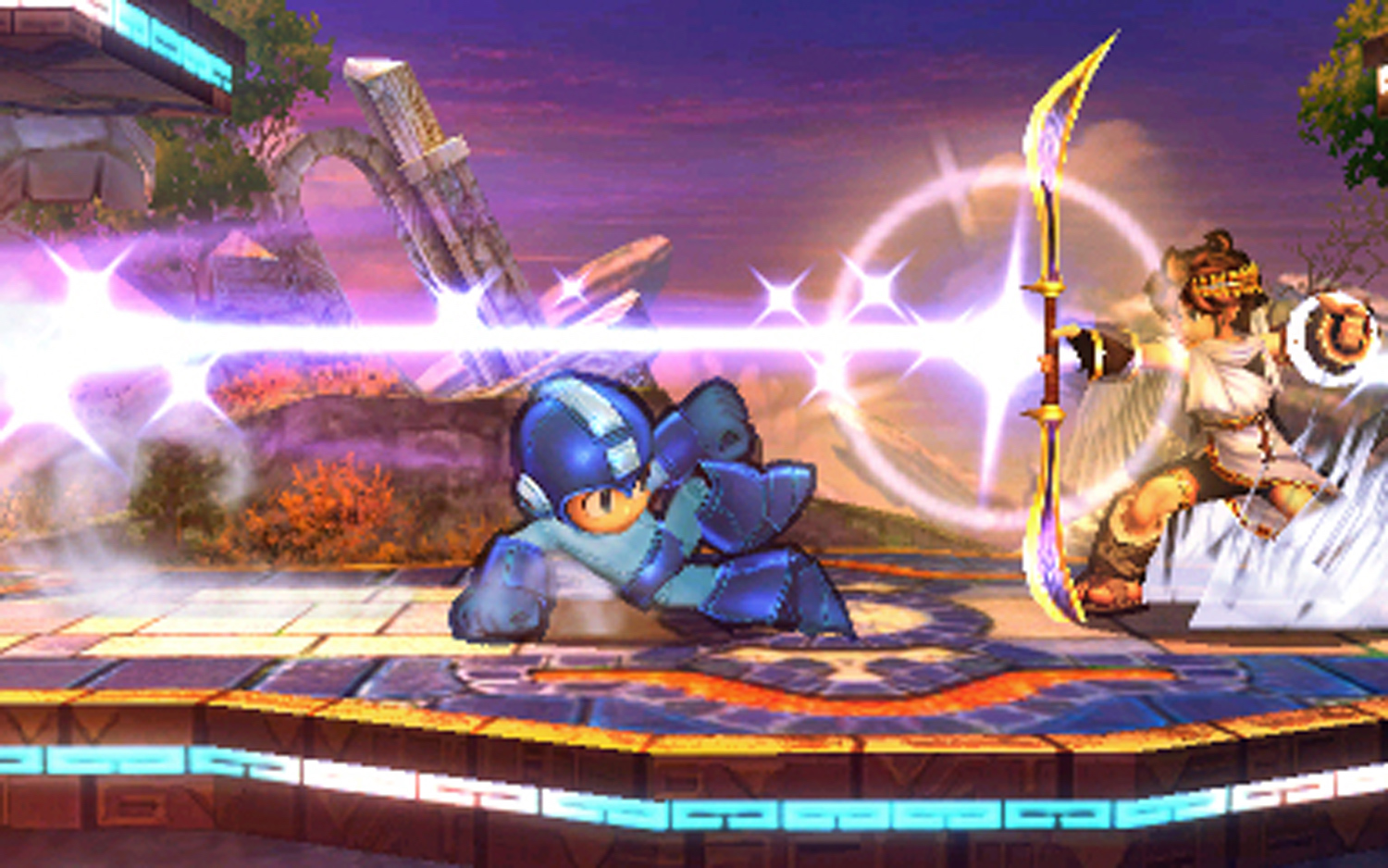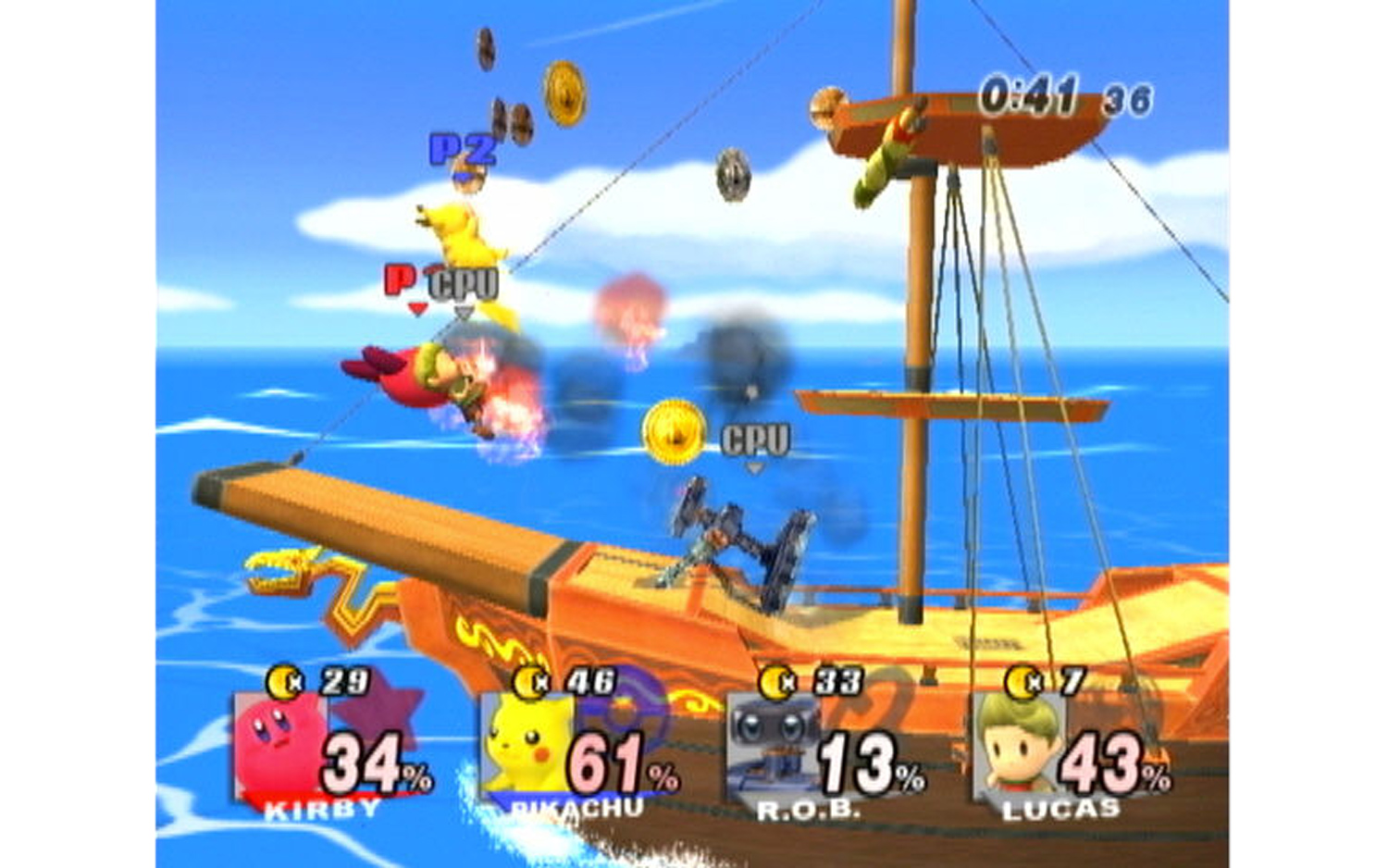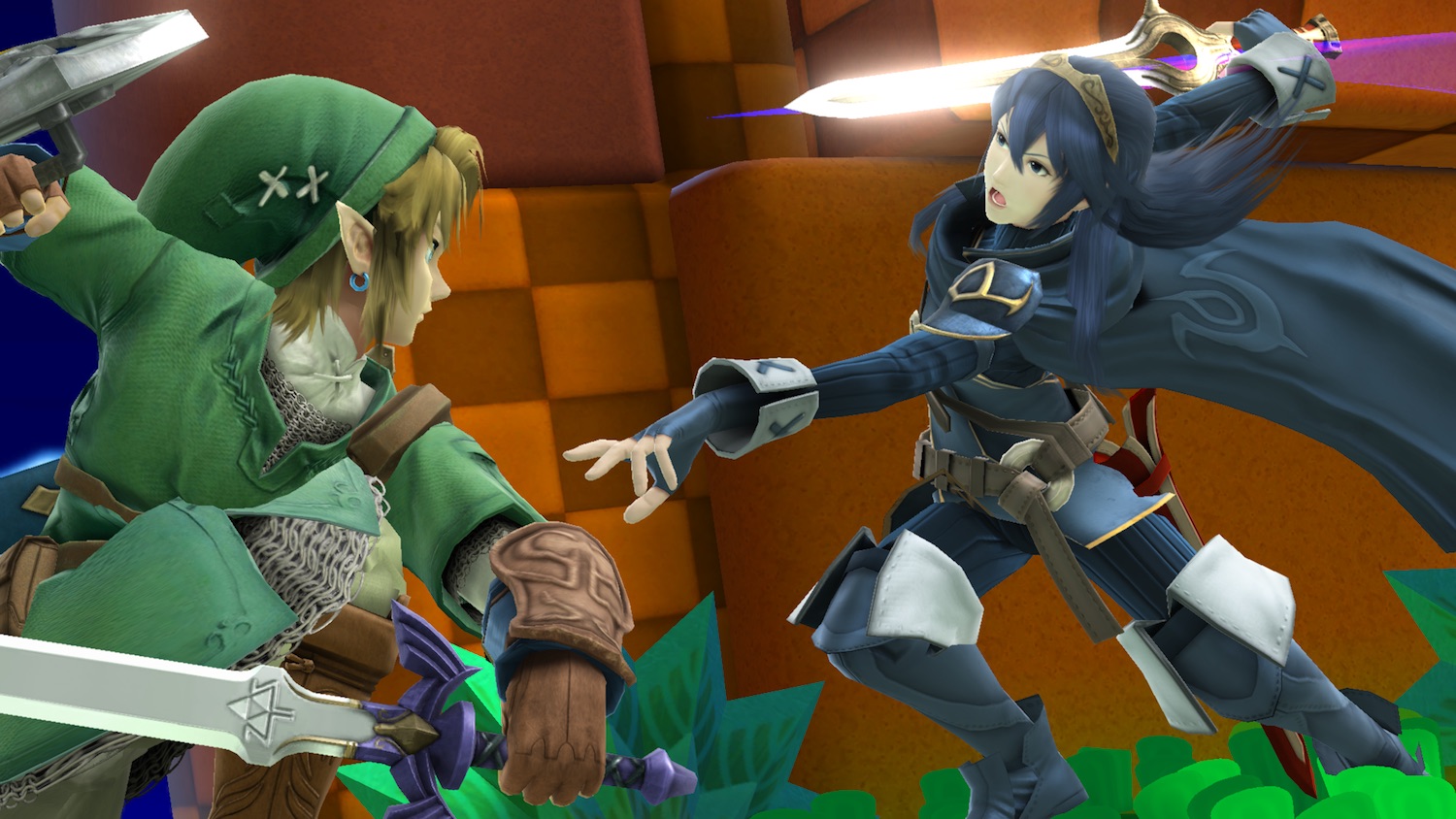All 6 Super Smash Bros. Games, Ranked Worst to Best
From 64 to Ultimate, here’s every Super Smash Bros. game ranked worst to best.

Nintendo's Super Smash Bros series has been one of the gaming giant's most enduring series, offering an accessible yet surprisingly deep way to get into beat 'em' ups without the complexity of learning convoluted combos and needing to have claw-like fingers.
It's also a series that lets you see who'd win in a throw down between Mario and Link, or Fox McCloud and Donkey Kong. This results in some action that as hilarious as it is chaotic.
The genesis of Super Smash Bros on the Nintendo 64 has evolved and reached its pinnacle with Super Smash Bros. Ultimate on the Nintendo Switch. The game packs a massive 74-character roster and over 100 stages that celebrate nearly two decades of Mario and friends beating each other senseless in the name of fun and competition.
Now that Ultimate is here, we’ve looked back at the entire Smash franchise and ranked every entry from worst to best.
6. Super Smash Bros. (1999)
Smash is a remarkably consistent series. Every entry builds upon the last, yet doesn’t mess with the formula too much. Incidentally, that means the latest installment is usually favored among fans (those especially tuned into Melee’s less forgiving gameplay notwithstanding, of course). It’s a good problem for a great series to have, which is why the first installment finishes at the back of the pack.

Yes, Super Smash Bros. on the N64 started it all, allowing Link, Mario, Zelda, Pikachu and even Ness to cross universes and battle for the first time ever, and that was certainly a big deal way back in 1999. Such a big deal, in fact, that Nintendo only allowed it to happen with the caveat that these were merely toys of your favorite gaming mascots — not the actual characters themselves. But the quirky party fighter hit critical mass with the faster, more madcap Melee just two years later, and the sequel’s larger selection of fighters and stages made it a dazzling early GameCube showcase. That leaves N64 Smash feeling like worthwhile historical piece for fans to revisit, but not the best representation of the chaos the brand would become known for. — Adam Ismail
5. Super Smash Bros. for 3DS (2014)
Super Smash Bros. for 3DS is impressive for two reasons: it was the first game to let you Smash on the go, and it matched its prettier-looking Wii U counterpart almost pound for pound in terms of content. Smash 3DS has the same massive 58-character roster (including DLC) as the Wii U version that would release shortly after, while also standing alone as its own game thanks to its exclusive loot-collecting Smash Run mode and a bevy of neat 3DS-exclusive stages. And the fighting is nearly every bit as fun and frantic as that of its big brother.
Get instant access to breaking news, the hottest reviews, great deals and helpful tips.

However, Smash 3DS’ biggest downfall is the 3DS itself -- no matter which version of Nintendo’s portable you’re playing on, Super Smash Bros. simply doesn’t look or feel that great on a small screen with tiny buttons. — Mike Andronico
4. Super Smash Bros. Brawl (2008)
Brawl had the unenviable task of following up Melee, and mostly succeeded on all fronts. It introduced the concept of non-Nintendo characters joining the fray with Sonic and Solid Snake — a facet that’s become so synonymous with the franchise, it’s tough to imagine Smash without it. It also reinvented the single player adventure mode with the Subspace Emissary campaign, which connected all of Smash’s disparate continuities in one sprawling, slickly-produced experience.

Brawl represented the moment Smash rightly assumed its place as the anthology of gaming, but it wasn’t perfect — a laggy online multiplayer experience failed to bring the series to the modern era, for one. Besides, it’s confined to the Wii, making it tough to revisit, and ultimately one of the best titles on what is perhaps Nintendo’s most polarizing console. — Adam Ismail
3. Super Smash Bros for Wii U (2014)
Up until Super Smash Bros. Ultimate came out, Super Smash Bros. for Wii U was the pinnacle of the series from a pure fan service perspective. Smash Wii U (known colloquially as “Smash 4”) pushed the Super Smash Bros. roster to ridiculous new heights, mixing mainstays like Mario and Link with fan-favorites like Villager and Little Mac and third-party guests like Mega Man and Pac-Man. Whatever middle-school arguments you had a bout which video game characters were cooler, there's a good chance you can settle it in this game.

Smash 4’s vibrant HD graphics still look gorgeous to this day, and its tight gameplay -- which finds a nice middle ground between the methodical Brawl and the frenetic Melee -- inspired years’ worth of exciting competitive action. And for casual fans, the new 8-player Smash mode was an even more chaotically joyful way to beat down your friends. Smash 4 is a bit lacking in terms of compelling single-player content, offering a lackluster Smash Tour party mode in lieu of a true story or adventure mode. But there’s a reason Super Smash Bros. Ultimate uses much of Smash 4 as its base -- it’s an incredibly fun fighting game with a roster plucked right out of your high-school fan fiction. — Mike Andronico
2. Super Smash Bros. Melee (2001)
No Smash game has quite the legacy of Melee. One of the Nintendo GameCube’s defining titles, Super Smash Bros. Melee expanded the roster with favorites like Marth and Zelda, and introduced staple features such as Adventure Mode and an addicting array of trophies to collect.

But it was Melee’s sped-up, refined gameplay that, intentionally or not, spawned a rabid competitive scene that still play the game professionally more than 17 years later. Melee has created some of the most iconic esports moments of all time, but, just as importantly, remains a blast to play either competitively or casually to this day. — Mike Andronico
1. Super Smash Bros. Ultimate (2018)
Super Smash Bros. Ultimate lives up to its name and then some. A celebration of not only the Smash series but video games as a whole, Ultimate crams 74 characters and 100-plus stages into a package loaded with content catered toward every type of player. Want to have Simon Belmont fight Solid Snake and Ridley in Pokemon Stadium? How about having Street Fighter's Ryu and Ken trade blows with Mario and Luigi in Final Fantasy VII's Midgar? You can do all of that and so much more. Smash Ultimate's robust assortment of rules and items mean you can have any type of match you want, from competitive 1-on-1s on Final Destination to crazy 8-player brawls brimming with items and assist trophies.

And then there's the game's Spirits system and World of Light adventure mode, which let you battle, collect and customize an array of "Spirits" that pay homage to just about every video game franchise you can think of from the past few decades. Whether you play Smash competitively, enjoy it as a party game or like mashing away solo, it's near-impossible not to find something you'll like in Ultimate. It's the truest definition of video game fan service, and the best Super Smash Bros. title to date. — Mike Andronico
Credit: Nintendo
Mike Andronico is Senior Writer at CNNUnderscored. He was formerly Managing Editor at Tom's Guide, where he wrote extensively on gaming, as well as running the show on the news front. When not at work, you can usually catch him playing Street Fighter, devouring Twitch streams and trying to convince people that Hawkeye is the best Avenger.

